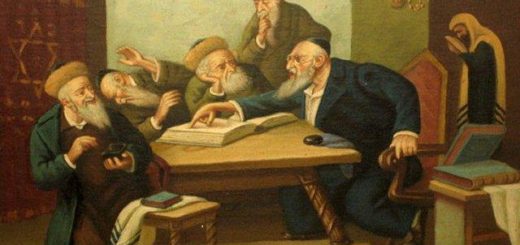Our lives in our hands on Sukkos

A little-known rabbinical source explores the relationship between Rosh HaShanah, Yom Kippur and Sukkos:
Said Rebbi El’ozor ben Meriom: why do we make a sukkah after Yom Kippur? To teach that since on Rosh HaShanah, God sits in judgement upon everyone alive and on Yom Kippur, He seals the judgement, it is possible that the Jewish people are deserving of exile. As such, they make the sukkah and exile themselves from their homes to the sukkah and God considers it as though they have been exiled to Babylon…. (Pesikta DeRav Kehana 2:7)
This thought is expressed in a prayer that some people say when entering the Sukkah:
And in the merit of my exit from my house to go outside…. may it be considered as though I had been sent far away as a wanderer….
It is hard to conceive of the modern sukkah as a form of banishment. Many sukkos are comfortable, even luxurious, close to the house, and, in some cases, inside the house. Even writing this from my sukkah in cold, wet England, with light drizzle settling on my computer screen, hardly seems like an exilic experience!
Perhaps this concept can be given a modern interpretation. We are all familiar with the need to get out of our regular environment from time to time: it is valuable to examine one’s conduct, schedule, perhaps even one’s whole life, from an outside vantage point, rather than from within it. Sometimes, one can only commit to life-changes, review one’s aspirations, and, in the words of a friend, ‘rediscover one’s own voice’ away from the demands and expectations of others and the pressures of normal existence.
After the spiritual exertions of Rosh HaShanah and Yom Kippur, we may be exhilarated, but exhausted physically and emotionally. Also, the commitments we have made to live better and more fulfilled Jewish lives may be sincere, but they are also fragile. It would be easy to simply slip back into our previous behaviour pattern, with little to show from Yom Kippur. The sukkah provides a welcome ‘break’ from one’s regular environment, enabling one to recover from the Yomim Norayim and consolidate and internalise one’s spiritual achievements. The sukkah allows us the space to scrutinise our lives from the outside inwards, consider our own deficiencies at a dispassionate distance and strengthen our resolve to rectify them. This may be just the sort of ‘exile’ we need straight after Yom Kippur.
Allow me to extend this thought to the lulav and esrog. Every rabbi has quoted the following Midrash when short of a sermon for Sukkos:
Rebbi Moni opened his exposition (of the lulav and esrog): all my limbs shall say, ‘God, who is like You?’ (Tehillim 35:10). This verse was only said in reference to the lulav [bundle]. The spine of the lulav resembles the spine of a person; the hadas (myrtle) resembles the eye; the arovoh (willow) resembles the mouth; the esrog resembles the heart. [King] David said: these are the most significant organs of the body, for they encapsulate the entire person. (VaYikra Rabbah 30:14)
When one takes the lulav and esrog, one is holding oneself in one’s hands, enjoying a rare chance to look at oneself from the outside. One can decide in which direction to point oneself in the year ahead and actually ‘take one’s life in one’s hands’ and start the process.
My wife suggested that this makes the pre-Sukkos careful selection of the lulav and esrog easier to understand: each item is carefully examined to ensure that it meets exacting standards of freshness, completeness and beauty. That examination is the opening salvo of a process of careful self-scrutiny from afar, the blessing of Sukkos.



This is lovely.
You British seem to write so well.
Moadim l’Simcha to one and all ,
I was looking for a Rav Dessler article when I just happened to stumble on Rabbi Belovski’s wonderful words . B’H”, this time last year we actually were blessed to be guests in Rabbi Belovski’s unforgetably simchadick sukkah .
Hear Hear to the previous comment . However it definately has more “Shake a Lulav ” vibrations than ” Shake a spearian ” .
A sweet year from the Edel’s in even wetter Vancouver ,Canada
I think that one can find many links between RH, YK and Sukkos. Here is one suggestion-RH offers all of Klal Yisrael the opportunity to wake up and start thinking about teshuvah. YK is inclusive of both the individual and the community, as is RH where we see very different texts for the community and the individual. YK, as a Taanis Tzibur, must include, Tzadikik, Beinonim and Reshaim to be defined as such. Taking the Arbah Minim together reminds us that we are all together, regardless of our spiritual levels.